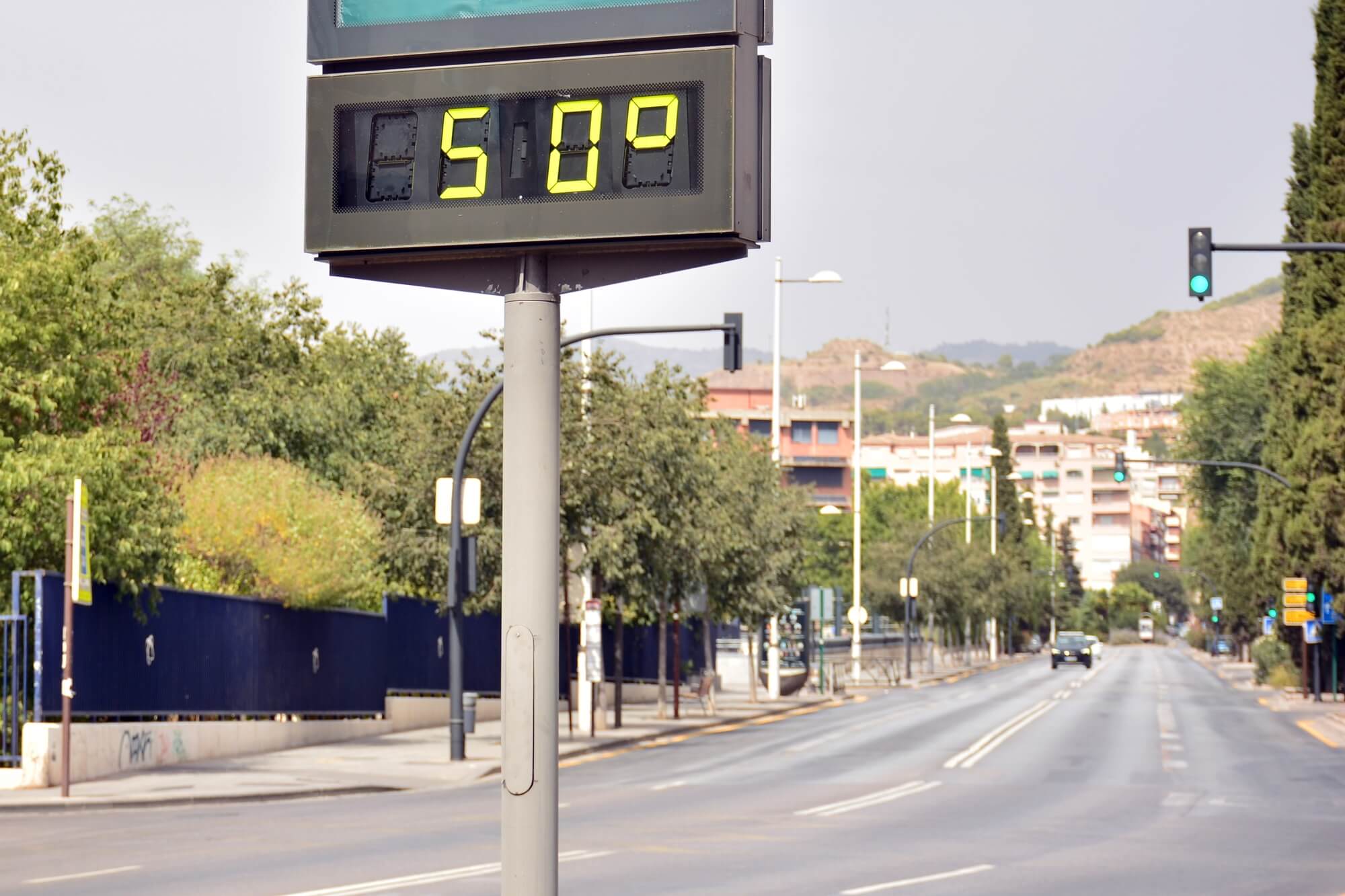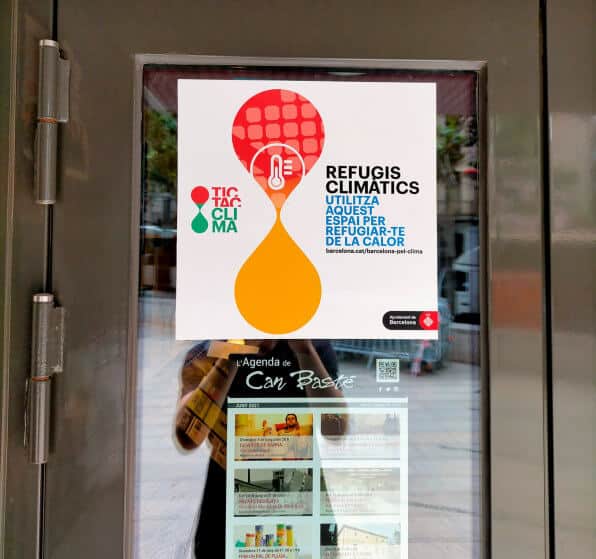In light of the continuous rise in temperatures in Europe, "climate shelters" have been established throughout the city of Barcelona, where residents can find refuge from the increasingly hot summer. Should Israel also prepare for the establishment of such shelters?
By Amnon Director, Zivata - Science and Environment News Agency

Here it starts again: little by little the temperatures rise, the percentage of humidity is felt all over the body and walking on the street in the afternoon (and morning and evening) becomes an unpleasant task at all. The Israeli heat season has officially opened, and for at least three months we will suffer from extreme heat that will affect the way we live, hang out and move from place to place. The deadly and destructive heat wave that hit Europe this week, which until recently was known for its comfortable summers, created emergency situations across the continent, and is an extreme point in an ongoing trend: For twenty years that the temperature in the summer months in Europe rises significantly.
Due to the obvious climatic changes, the city of Barcelona in Spain recently decided to find creative solutions to the heat: "climate shelters", which offer residents pleasant corners to stay in during the intense heat in the summer months.
Network "The climate shelters" Spread throughout the city, it includes specific areas, spaces or facilities - some are public buildings such as schools and public libraries, some are shaded public spaces with lots of vegetation and roofs that protect from the heat. A significant part of the closed shelters will be located in existing areas of public schools, mainly due to the fact that in the summer months the schools are empty, and they can be used for other needs. The open climate shelters include cooling fountains, gardens and green walls, awnings, solar shading and roofs that produce better ventilation. They are designed so that the temperature in them will be at most 26 degrees Celsius, that the accessibility to them will be good, and they will be able to be used as a resting place for the residents.
The project operates from mid-June to mid-September, the warmest months of the year. The climate shelters are marked with dedicated entrance signs and they can also be found with the help of an online map available to residents. It should be noted that in the last year the number of climate shelters in Barcelona has more than doubled, rising from 70 to 163 - which guarantees 90 percent of the population a shelter from the heat within a 10-minute walk from home. It should be noted that Barcelona is not alone, and Paris has also started promoting these days A similar project in its territory.
It's hotter in the city
A project like the climate shelters is especially essential in cities: you may have noticed that large gates are characterized by a significantly higher temperature than their surroundings. The main reasons for this phenomenon, which earned its name "Urban Heat Island", are the great density, the amount of cars and the air pollution they produce and the use of a lot of energy. according to Agency For protection הסביבה של USA״ב (EPA), the temperature in the cities of the country is about 4-0.5 degrees Celsius higher than in the surrounding areas during the day, and about 2.7-1.1 degrees Celsius at night. The most significant differences are observed in cities with larger and denser populations and in humid areas of the country. Various studies indicate that the urban heat island phenomenon is only expected to worsen.
Unlike Israel, in European cities most buildings are not networked with sophisticated and powerful air conditioning systems - which makes life in the hot months particularly challenging. As a result, many cities in Europe and the world are looking for creative solutions and practical steps to reduce the effects of rising temperatures on city residents, especially in the hot months.
better adapt the city to the climate

Are climate shelters an effective solution to the urban heat problem? Good question. "In my opinion, the effectiveness of this project is limited in everything that concerns day-to-day life, since it provides an answer mainly to extreme events of heat waves - even though it has clear image advantages," says Dr. architect Or Alexandrovich, a faculty member at the Faculty of Architecture and Construction Cities at the Technion specializing in urban climate. "It is easier to do spot actions and add a shed here or a shelter there, than to create a serious infrastructural change that requires taking large systems out of their comfort zones." According to him, although the network of street trees that exists in Barcelona should be praised, the real challenge is to adapt urban spaces to the local climate in a deeper way.
The space is not designed for pedestrians
As you know, Israel is also characterized by a particularly hot climate, QMore and more extreme With the worsening of the climate crisis. Air conditioning in closed buildings is indeed much more common in Israel than in Europe, but as far as the open public space is concerned, it seems that in many areas "Shadow" is a rude word - and without proper planning of the urban spaces, it will be more and more difficult to walk in the street and enjoy the open spaces in the warm months. "It seems that Israeli planning does not recognize the existence of life in the everyday public space of the street," claims Alexandrovich. "We see it in the way neighborhoods and cities are planned today: they are not adapted to pedestrian traffic, which is the basis of all urban life. It seems that the climate issue is of no interest to anyone.' According to him, the Israeli space is mostly designed first and foremost for cars, and for their convenient and pleasant flow from place to place. "Anyone who doesn't drive a car for one reason or another, remains on the sidelines and doesn't really count in Israeli planning," he says.
According to Alexandrovich, the problem is only expected to get worse. "In Israel, unlike in Spain, there is a crazy pace of development because of the population growth," he says. "Shadow does not form by itself, it has to be made to form - a planner cannot lower temperatures, but he can plan a comfortable climatic environment. We know scientifically and intuitively that the difference in feeling between a shaded point and a point that is not shaded is enormous.'
It should be noted that dealing with the shadow (or more precisely the lack of shadow) in Israel has risen to the public and professional agenda in recent years. "Every summer we read articles in the press about how there is no shade in Israel," says Alexandrovitch. "It was even accepted this year Government decision which promotes a national program for shading through trees in the public space. However, it is a long way from here to saying that this change permeates everyday planning practices.'
We must plan according to the climate
According to Alexandrovich, it is necessary to massively add shading to existing open spaces with walking potential. "Beyond that, it is particularly important to take care of spaces that are not yet built - before the corruption enters the system," he says, and warns that without a radical change of the planning system and without appropriate laws, we will suffer for many more years from the lack of shade: "Even if we start planning correctly today, there is at least Another decade until we feel improvement,"
Will the young generation of planners bring about the change, and lead to the expansion of shading in the public space? It's possible. "In a historical perspective there is a certain change, more people understand the necessity of a shadow in the public space," says Alexandrovitch. "However, the problem may be that most of them are young guys who still do not make decisions on the issue in our country."
"In Israel there is no lack of knowledge on the subject - but rather a lack of willingness to recognize it as an issue on the planning table alongside other issues," Alexandrovich concludes. "We must include the climate issue in the planning processes."
More of the topic in Hayadan:
